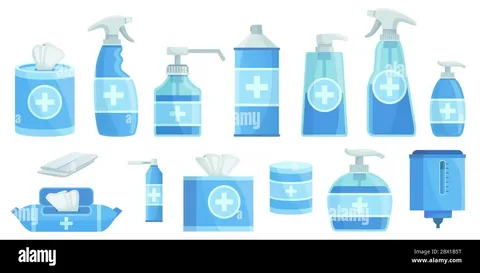Antiseptic and Disinfectant Market: Exploring Natural Alternatives and Their Effectiveness

The antiseptic and disinfectant market has experienced a transformative shift in recent years, driven by an increasing awareness of hygiene and the importance of infection control. As global health challenges continue to rise, consumers and healthcare professionals alike are searching for effective solutions that not only eliminate pathogens but also align with growing environmental and health consciousness. In this context, natural alternatives are gaining traction, presenting significant market opportunities while offering consumers viable options that are both effective and sustainable.
The Rise of Natural Alternatives
Natural alternatives to traditional antiseptics and disinfectants have become increasingly popular, largely due to the rise in consumer awareness surrounding the potential health impacts of synthetic chemicals. Ingredients derived from plants—such as essential oils, vinegar, and botanical extracts—are being touted for their antimicrobial properties and lower toxicity profiles. These natural products appeal to a growing demographic that prioritizes eco-friendliness, sustainability, and health safety in their purchasing decisions.
The market is witnessing an influx of products that utilize these natural ingredients. Companies are innovating to create formulations that harness the power of nature while ensuring efficacy against a wide range of pathogens. This trend is not only shaping consumer preferences but also influencing product development strategies within the industry.
Effectiveness of Natural Ingredients
One of the primary concerns regarding natural alternatives is their effectiveness compared to traditional chemical-based products. Research and consumer testimonials increasingly indicate that many natural ingredients can effectively combat a variety of pathogens, including bacteria and viruses. For example, essential oils such as tea tree oil, eucalyptus oil, and lavender oil have demonstrated antimicrobial properties in various studies, making them popular choices for both household and healthcare applications.
While traditional products have established efficacy, the growing body of research supporting natural alternatives is reassuring consumers that they do not have to sacrifice effectiveness for safety or environmental concerns. As the demand for natural solutions continues to rise, manufacturers are responding by validating the efficacy of these ingredients through rigorous testing and scientific research.
Market Opportunities for Natural Alternatives
The shift towards natural alternatives presents numerous market opportunities for businesses willing to innovate and adapt. First, there is a growing demand for eco-friendly products as consumers seek to minimize their environmental impact. Companies that prioritize sustainable sourcing, production methods, and packaging will likely resonate with environmentally conscious consumers.
The healthcare sector is another area ripe for opportunity. As healthcare facilities strive for higher standards of cleanliness and infection control, there is a growing interest in integrating natural disinfectants into their protocols. Natural alternatives can be particularly appealing in environments where chemical sensitivities are a concern, such as pediatric or geriatric care settings.
Challenges and Considerations
While the prospects for natural alternatives in the antiseptic and disinfectant market are promising, there are challenges that manufacturers must navigate. One of the primary concerns is consumer education. Many individuals still hold misconceptions about the effectiveness of natural products compared to their synthetic counterparts. Companies need to invest in informative campaigns that highlight scientific research, efficacy studies, and safe usage guidelines.
Quality control is also paramount. The effectiveness of natural ingredients can vary based on sourcing and processing methods. Companies must ensure consistency in their formulations to build consumer trust and satisfaction. This can involve sourcing high-quality raw materials, implementing stringent manufacturing practices, and engaging in transparency about ingredient origins.
The Future of the Market
Looking ahead, the antiseptic and disinfectant market is poised for continued growth, particularly in the realm of natural alternatives. As consumers become more health conscious and environmentally aware, the demand for effective, safe, and sustainable products will only increase. Manufacturers that focus on innovation, transparency, and consumer education will be well-positioned to thrive in this evolving landscape.
- Art
- Causes
- Crafts
- Dance
- Drinks
- Film
- Fitness
- Food
- Games
- Gardening
- Health
- Home
- Literature
- Music
- Networking
- Other
- Party
- Religion
- Shopping
- Sports
- Theater
- Wellness


